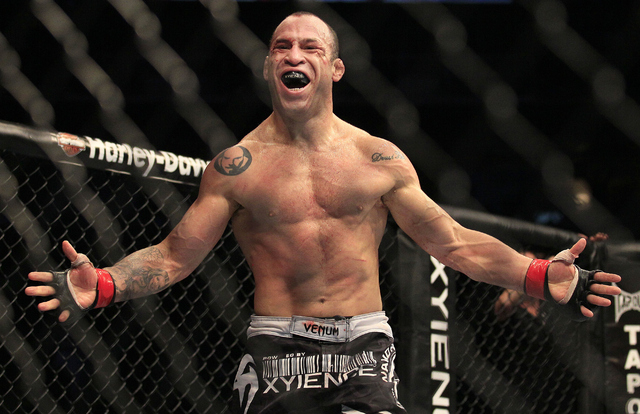The Controversial Saga of Wanderlei Silva and His Lifelong MMA Ban
In 2014, the world of mixed martial arts (MMA) was thrown into a turmoil following a controversy tied to one of its greats, Wanderlei ‘The Axe Murderer’ Silva. The incident related to a random drug test evasion allegation led to a stern response from the Nevada State Athletic Commission (NSAC). What ensued was a ban on Silva that essentially excluded him from MMA in Nevada for the entirety of his life, along with a $70,000 fine.
To comprehend this incident in its entirety, one must delve into the specifics. The unfolding began in May 2014, as Silva was gearing up for a duel with Chael Sonnen as part of the UFC 175. Coinciding with his training, the NSAC, following their standard protocols, decided to undertake a random drug test.
Silva’s training was taking place at an exercise gym located in Las Vegas. When the NSAC officials arrived at the gym for the random drug test, Silva seemed to have made his escape through the rear exit, thereby avoiding the specimen collection process. This evasion of the drug test became a central aspect of the controversy that was to follow.
During the subsequent investigation, Silva confessed to using diuretics, a class of drugs that the athletic commissions explicitly forbid. According to Silva, the purpose behind his diuretic consumption was to combat inflammation and manage water retention issues, which resulted from a wrist injury he had earlier sustained.
While diuretics do not have inherent performance-enhancing properties, they are still outlawed in athletic events. The main reason behind their ban is their potential to conceal the presence of other drugs in the body or speed up the excretion of such substances.
Silva’s evasion of the drug test and subsequent admission to diuretics use was a severe violation against NSAC’s regulations. It led the Commission to impose its toughest punishment at the time – a lifelong ban on Silva from competing in Nevada and a hefty fine of $70,000.
Given the severity of Silva’s actions, which amounted to skipping a drug test and dodging the regulatory authority’s oversight, the NSAC believed it was necessary to set a strong example through punitive measures. However, Silva did not accept this decision without pushing back.
In January 2015, Silva lodged an appeal against the NSAC’s decision. His argument was built on the claim that the Commission did not possess the jurisdiction to punish him, as he hadn’t been officially granted a fighter’s license in Nevada when the attempt for the random drug test happened. The fighter also branded the punishment as ‘arbitrary and capricious’.
Later, a judge from the Nevada District Court echoed Silva’s claim about the ban and fine being disproportionate and exceeding the NSAC’s permissible boundaries. He, therefore, legally mandated a re-evaluation of the penalty.
After this court order, the NSAC was compelled to hold a rehearing in February 2016. This new session brought about a remarkable change in the original decision. The previously imposed lifetime ban on Silva was withdrawn, and the $70,000 fine was also revoked.
Instead of a lifetime ban, the NSAC imposed a three-year suspension on Silva, counting from May 24, 2014. This adjustment meant that Silva would have the chance to compete again starting from 2017.
Silva’s story has since been regularly cited in MMA regulatory forums as a model case. This incident paved the way to observe the strict adherence of athletes towards anti-doping rules even before a positive test surfaces, and notably when an athlete attempts to dodge testing.
This case also shed light on the importance of due process in such situations. It demonstrated how top-tier fighters could contest bans, especially when there are questions regarding jurisdiction, fairness, and proportionality of the disciplinary action.
From Silva’s viewpoint, it caused an extended period of uncertainty around his MMA career and missed potential engagements, primarily with Nevada and the UFC. Additionally, his reputation suffered a significant blow.
However, all was not lost for this fighter. The reversal of the ruling allowed him to re-enter the competitive arena post-suspension, though he was subjected to competing under different promotion arrangements.

